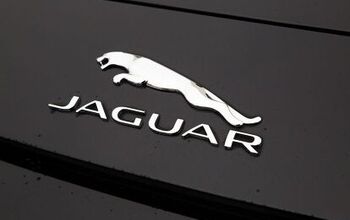Ford's Small Car Purge Continues Apace

Two months and change after Ford Motor Company ceased production of North America’s smallest Blue Oval vehicle, Europeans are waking up to news that their tiniest offering has a date with death.
The Ka+, a name this writer can’t read without imagining a Bostonian pronouncing the word “car,” will disappear from the marketplace thanks to —what else? — fuel economy regulations that disproportionately impact small vehicles.
Some of the blame goes beyond zealous European lawmakers, known for refreshing emissions and efficiency regulations with the regularity of a teen posting Facebook updates. It also goes beyond the complex math behind rules like CAFE and their overseas equivalent.
Ford’s European business is in triage mode. After a lengthy period of unprofitability, workforce cuts, model culls, plant closures, and sure-thing introductions of mostly heavier, less efficient vehicles have become the norm as Ford attempts to turn around a sinking sector. With this in mind, it’s no surprise the automaker plans to drop its smallest vehicle ahead of new, more stringent emissions rules.
The updated regulations poised to land in 2020 would hit the Ka+ hard, a Ford spokesman told Automotive News, “making it less attractive to customers in a competitive segment.” Due to the low profit margin of small cars, especially those in the “city” class, updating such models with pricey fuel-saving technology doesn’t make much sense — certainly not for an automaker attempting to shore up a weak point in its business. (It’s worth noting that Ford’s triage efforts are bearing fruit — the company’s European business posted a profit in the second quarter of 2019.)
So, just as the North American Ford Fiesta bit the dust in May, the Ka+ will stop flowing to European dealers in September, the spokesman said.
Sporting four doors, a liftback, and Indian origin, the Ka+ is the successor to the diminutive Ka three-door that appeared on European streets in the late 1990s. Two engines are on offer: a 1.2-liter gas three-cylinder and a 1.5-liter diesel triple. The lowest combined fuel economy of the model’s range is the 43.5 mpg offered by the 1.2-liter Active variant. Auto stop-start comes standard.
Oh sure, there’ll eventually be an electric replacement to bolster Ford’s green cred, but don’t hold your breath waiting for a gas-free entry-level economy car that starts at roughly $14,000 U.S.
While Europeans come to grips with another example of the small car decline — Ford’s hardly alone in scrapping subcompacts — these buyers can at least find solace in the fact that the Fiesta and Focus, as well as their lifted or boosted offspring, remain in the catalogue. Americans can’t say the same.
[Images: Ford of Europe]

More by Steph Willems
Latest Car Reviews
Read moreLatest Product Reviews
Read moreRecent Comments
- Redapple2 175,000 miles? Wow. Another topic, Hot chicks drive Cabos at higher % than most other cars. I always look.
- Mister When the news came out, I started checking Autotrader and cars.com for stickshift Versas. There are already a handful showing at $15.3k. When anybody talks about buying a new Versa, folks always say that you're better off buying a nicer used car for the same money. But these days, $15.3k doesn't buy very many "nicer used cars".
- 28-Cars-Later A little pricy given mileage but probably not a horrible proposition for a Sunday car. The old saying is you're not buying a pre-owned car you're buying the previous owner, and this one has it hooked up to a float charger (the fact he even knows what one is, is a very good sign IMO). Leather and interior look decent, not sure which motor this runs but its probably common (for VAG at least). Body and paint look clean, manual trans, I see the appeal."but I think that's just a wire, not a cracked body panel." Tim, its a float charger. I am doing the exact same thing with the charger hanging via a magnetic hook on the HVAC overhead in my garage.
- Bd2 Nissan is at the bottom of the market while Hyundai and Kia are almost at the zenith summit.
- Theflyersfan Then what caused that odd melted crayon smell that new VWs had for ages? Was that the smell of the soft touch plastics beginning their slow but endless march back into their base elements?And you know what gets rid of any new car smell body killing emissions? Top down, drive fast. Cures everything.



































Comments
Join the conversation
I didn’t even know that Ford ever brought the Ka back in house, I thought they were still using the Fiat 500 platform and building them both at the same factory, but that ended in 2016 according to Wikipedia
The shift to nasty CUV's and SUV's happened long before Agent Orange took hold in the White House. Sadly, people think that these putrid things are the cat's meow right now (I love how they can't even navigate on and off ramps of an interstate at the speed my Hyundai loves to be driven). Sadly there are those who want trade policies that put America at a disadvantage . Decades of putrid agreements have shafted us and given us a false sense of cheap products that are produced by humans on starvation wages. I'm sure it feels good to be so inclined, but it is time that countries who don't play by the same rules as us (labor, intellectual property rights, and environmental standards), get a taste of having to do so.